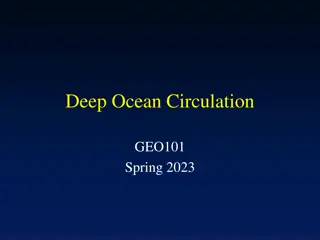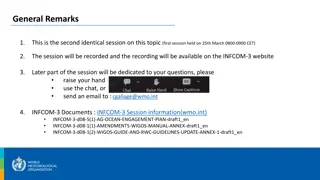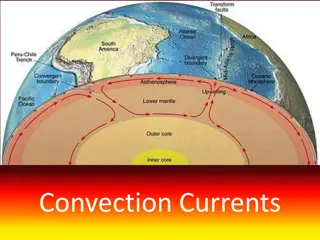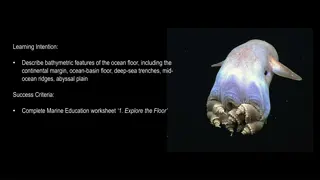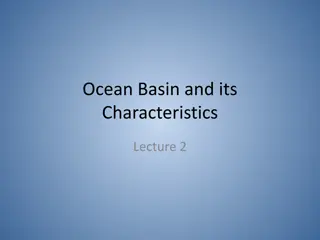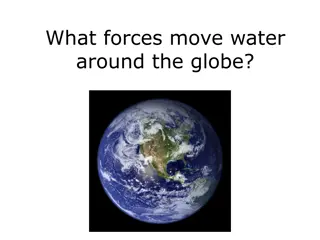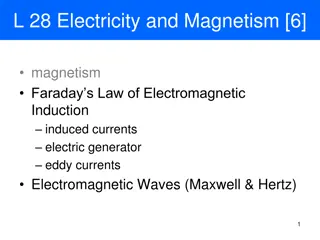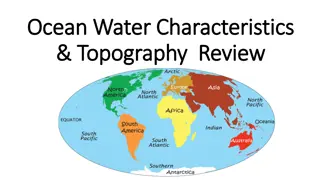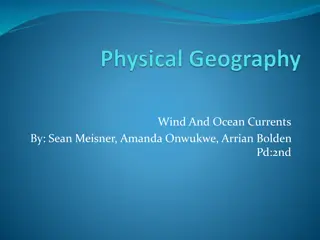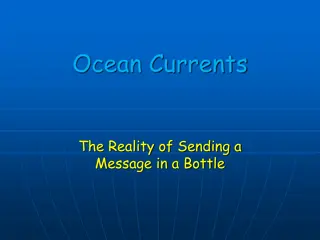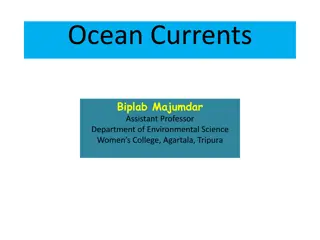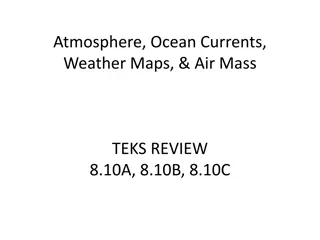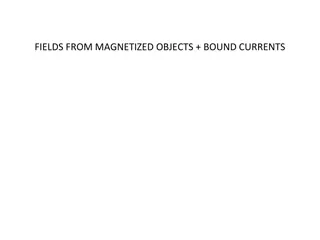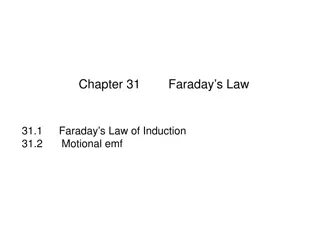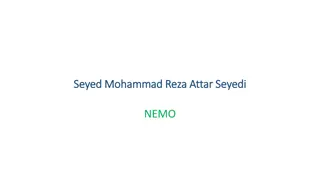Understanding Ocean Currents and Effects
Ocean currents play a crucial role in the movement of water across the Earth's surface. Wind-driven surface currents, influenced by the Coriolis effect, move water horizontally and impact climate patterns worldwide. Major currents extend deep below the surface and can move rapidly, while rip currents pose dangers near shorelines. The Coriolis effect, shaped by continents, affects current flow and speed. Upwelling, driven by wind pushing surface water away, brings nutrient-rich cold water to the ocean's surface, benefiting marine ecosystems.
Download Presentation

Please find below an Image/Link to download the presentation.
The content on the website is provided AS IS for your information and personal use only. It may not be sold, licensed, or shared on other websites without obtaining consent from the author. Download presentation by click this link. If you encounter any issues during the download, it is possible that the publisher has removed the file from their server.
E N D
Presentation Transcript
Vocabulary Ocean Current Coriolis Effect Rip Current Upwelling
Major Ocean Currents An Ocean Current is a large volume of water flowing in a certain direction. Wind-driven currents are called surface currents. Surface currents carry warm or cold water horizontally across the ocean s surface
Major Ocean Currents Surface currents extend to about 400 m below the surface, and they move as fast as 100 km/day. Earth s major wind belts, called prevailing winds, influence the formation of ocean currents and the direction they move.
Rip Currents A rip current is a narrow, powerful surface current which flows away from the shore. It is caused by pressure building up from uneven buildup of water from waves. They can flow very quickly and can be difficult to detect until you are in one.
Rip Currents are Dangerous! Rip currents are responsible for about 150 deaths every year in the United States. About 80 percent of all beach rescues are related to rip currents. Rip currents don t pull swimmers under, they flow out for several miles. If you get caught in a rip current, swim parallel to the shore until you are out of the current.
Coriolis Effect The Coriolis Effect is the movement of wind and water to the right or left that is caused by Earth s rotation. It causes fluids such as air and water to curve to the right in the Northern hemisphere, in a clockwise direction. The Coriolis effect also cases fluids to curve to the left in the southern hemisphere, in a counterclockwise direction.
Coriolis Effect The shapes of continents and other land masses affect the flow and speed of currents. Currents form small or large loops and move at different speeds, depending on the land masses they contact.
Upwelling Upwelling is the vertical movement of water toward the ocean s surface. Upwelling occurs when wind blows across the ocean s surface and pushes water away from an area. Deeper colder water then rises to replace it. Upwelling often occurs along coastlines. Upwelling brings cold, nutrient- rich water from deep in the ocean to the ocean s surface.
Density Currents Density Currents are a type of vertical current that carries water from the surface to deeper parts of the ocean. Density Currents are caused by changes in density rather than wind. Density currents circulate thermal energy, nutrients and gases.
Impacts of Weather and Climate Warm-water currents and cold-water currents affect weather and climate in different ways Regions near warm- water currents are often warmer and wetter than regions near cold-water currents
Impacts on Weather and Climate The Gulf Stream is a warm-water current that affects coastal areas of the southwestern United States by transferring lots of thermal energy and moisture to the surrounding air. The cold California Current affects coastal areas of the southwestern United States.
Great Ocean Conveyor Belt The Great Ocean conveyor Belt is the name for a model of the large system of ocean currents that affects weather and climate by circulating thermal energy around Earth. In this model, high salinity water cools and sinks in the North Atlantic, and deep water returns to the surface in the Indian and Pacific Oceans through upwelling
Great Ocean Conveyor Belt Scientists estimate that the Great Ocean Conveyor Belt model takes about 1,000 years to complete a cycle.



